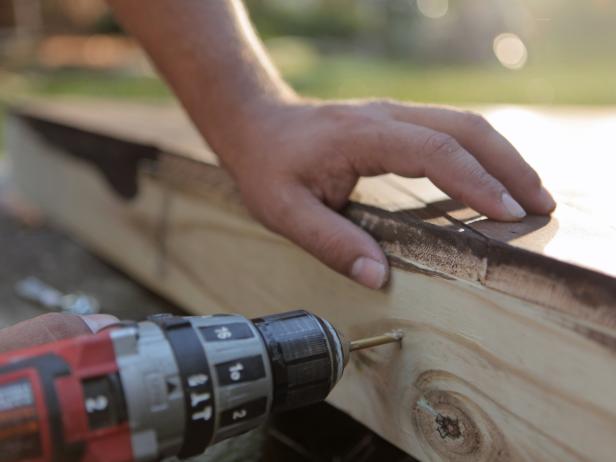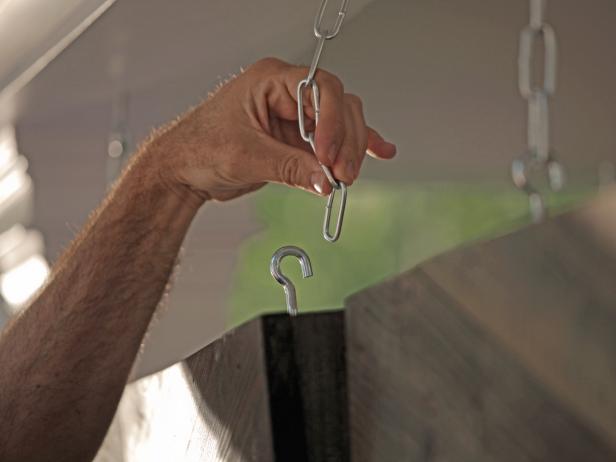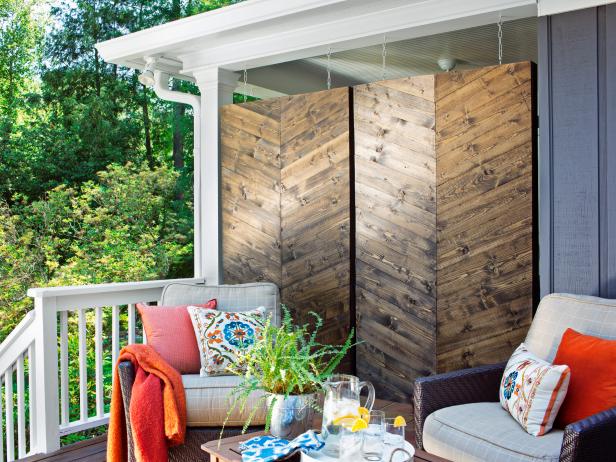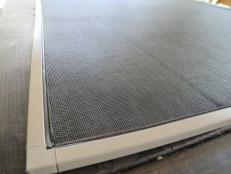How to Build a Herringbone Privacy Screen

Create stylish and affordable outdoor privacy screens by arranging boards in a herringbone pattern (also known as a chevron pattern.) The secret to the design is laying the boards out at a 22-1/2 degree angle.
Materials Needed:
- 1X6 pressure-treated pine slats
- drill or nail gun
- 3-inch exterior screws or nails
- 2X4 pressure-treated lumber
- outdoor stain
- outdoor sealer
- paint brush or stain pad
- tape measure
- pencil
- circular saw
- miter saw
- 4 L-brackets
- galvanized metal C-hooks
- exterior chain
- speed square
Cut Wood for Frame
Using miter saw, cut two pieces of pressure-treated 2X4 at 37 inches, two pieces at 72 inches and one piece at 69 inches. The finished screen will be 72 inches by 40 inches.
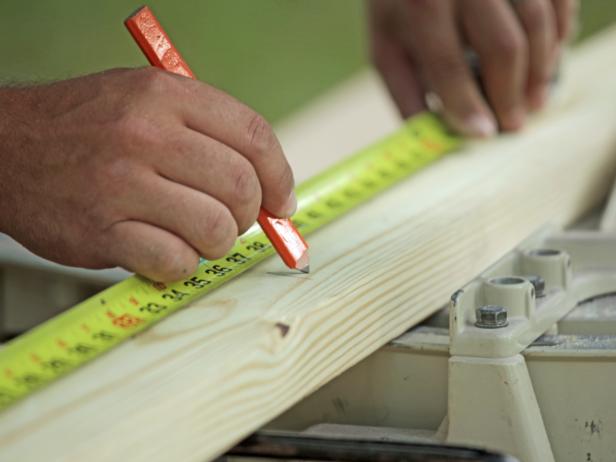
Assemble Frame
Lay the five pieces out on a flat, level surface. Next, line pieces up using a speed square with the two 37 inch pieces on the top and bottom and the 72 inch pieces on the sides. Fasten two top corners together to ensure frame pieces have been properly cut to size.
Using 3-inch exterior screws or nails, fasten all outside frame pieces together with drill or nail gun.
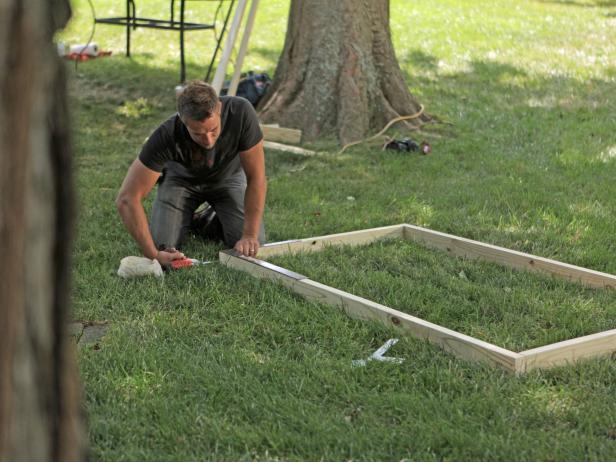

Attach Center Support
Using tape measure and pencil, mark the center point of the top and bottom 2X4s. Next, place the remaining 69 inch 2X4 on the pencil marks, then with drill or nail gun.
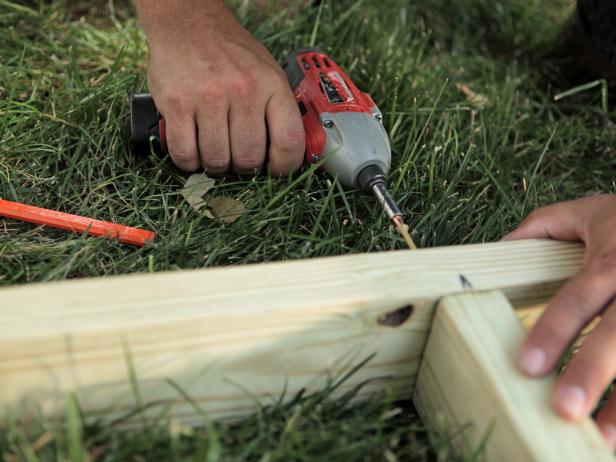
Mark Center Line
Using tape measure and pencil, make a line directly down the middle of the center 2X4. This line will be your guide for the proper placement needed to create the herringbone pattern.
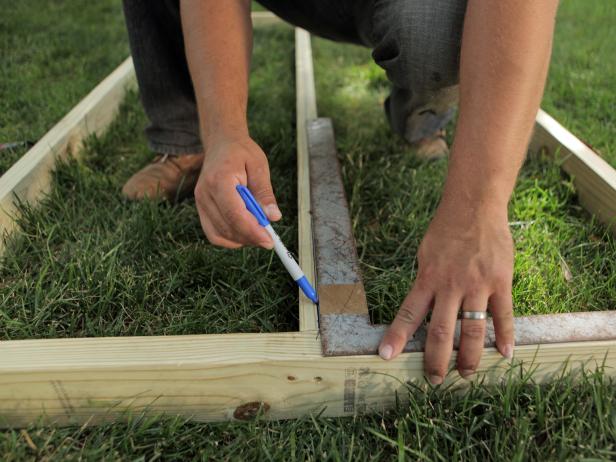
Attach L-Brackets
Using drill and exterior screws, attach L-brackets to each corners of the frame for added stability.
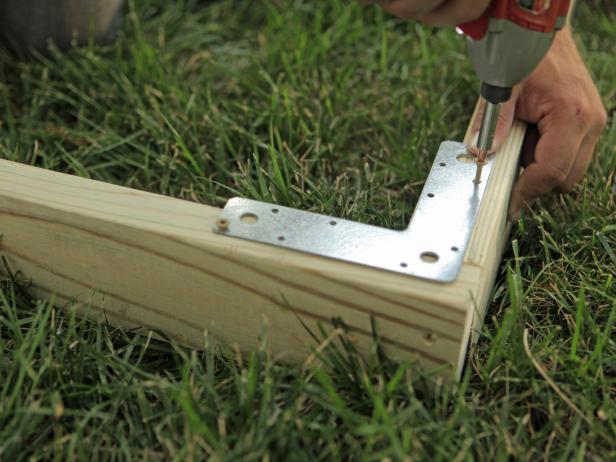
Cut Herringbone Pieces
Using a circular saw, cut a pilot piece of the 1x6 pressure-treated pine that runs from the outside edge of the frame to the center of the middle 2X4; this should come to exactly 30 inches. Next, cut one edge off at a 22-1/2 degree angle using miter saw. After placing the cut piece onto the frame to ensure it is cut correctly, mark then cut the opposite end with miter saw at a 22-1/2 degree angle.
Repeat the same marking and cutting process for all boards on the front and back sides of the partition.

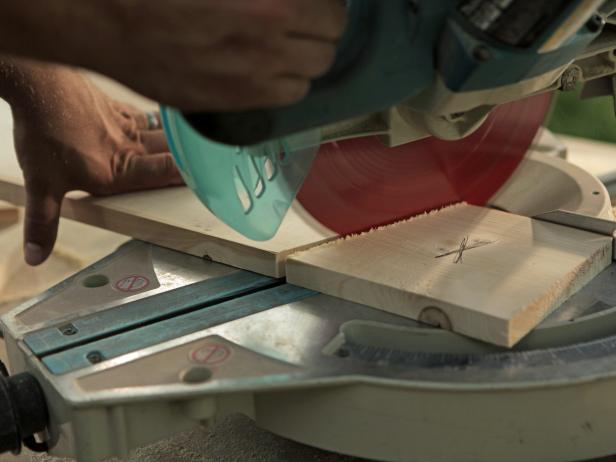
Attach Boards
Using drill and exterior screws or nail gun and nails, attach each of the mitered planks to the frame. Attach each pine plank so that one end of the board completely covers the side post and the other end covers half of the center post. The herringbone pattern will be created when the two planks meet in the middle.
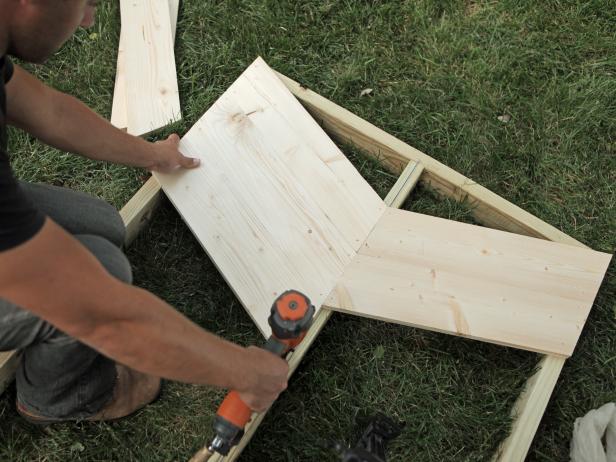
Cut Edges
On the very top and bottom corners of your screen, use a tape measure and pencil to mark where the edges will be cut. Next, cut with circular saw.

Attach Trimmed Corner Pieces
Attach the trimmed top and bottom corner pieces using nail gun or drill.

Stain and Seal Wood
Using a stain pad or a paint brush, add stain to planks and frame. Let dry, then apply outdoor sealant. Let dry completely before hanging.
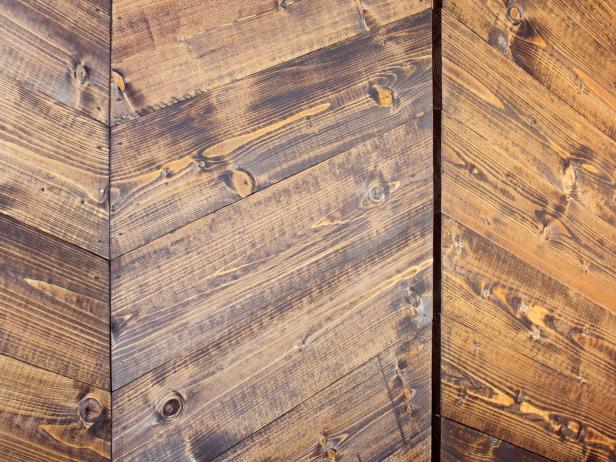
Hang the Privacy Screen
Drill two holes into the top of each frame for attaching C-hooks, spaced approximately 6 inches in from the outside edge. Next, screw C-hooks into holes in top of frame, add corresponding C-hooks to the ceiling and attach to one another with pre-cut chain.
